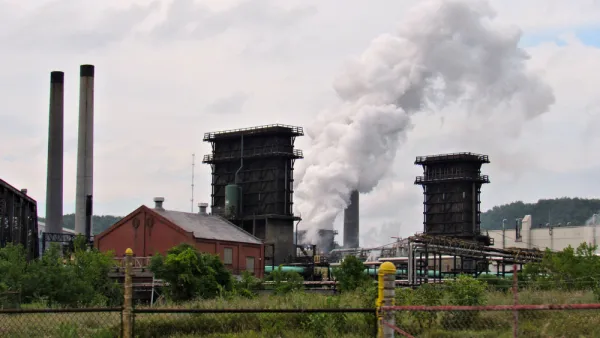Sixty years after twenty people died from air pollution spewing from a steel and zinc mill in Donora, PA (just outside Pittsburgh) in perhaps the worst air quality tragedy in the U.S., a museum has opened to commemorate and learn from the tragedy.
The smog from the two mills rolled in Oct. 27, 1948, and didn't lift until it rained on Oct. 31. By then, "20 people in Donora had died, and nearly half the town became ill in one of the worst air pollution disasters in the nation's history."
"Over the last two weeks, (Donora residents) marked the 60th anniversary with memorials for the families of those who died".
"We want people to realize Donora was a big part of the environmental movement," said Don Pavelko, a Donora councilman who came up with idea for the museum.
"Smog was not unusual in Donora, a town of 14,000 then that was home to the American Steel & Wire Company and the Donora Zinc Works plants - both run by the United States Steel Company - that sat along the river and employed 5,000 people.
But this was different. The thick, yellowish, acrid smog was the result of an unusual weather inversion - a pocket of warm, stagnant air - that sat over the valley for five days.
Underneath what was essentially a lid on the valley were sulfuric acid, nitrogen dioxide and other poisonous gases, including fluorine, that would normally rise into the atmosphere. Most researchers blame the zinc plant..."
FULL STORY: Unveiling a Museum, a Pennsylvania Town Remembers the Smog That Killed 20

National Parks Layoffs Will Cause Communities to Lose Billions
Thousands of essential park workers were laid off this week, just before the busy spring break season.

Retro-silient?: America’s First “Eco-burb,” The Woodlands Turns 50
A master-planned community north of Houston offers lessons on green infrastructure and resilient design, but falls short of its founder’s lofty affordability and walkability goals.

Delivering for America Plan Will Downgrade Mail Service in at Least 49.5 Percent of Zip Codes
Republican and Democrat lawmakers criticize the plan for its disproportionate negative impact on rural communities.

Test News Post 1
This is a summary

Test News Headline 46
Test for the image on the front page.

Balancing Bombs and Butterflies: How the National Guard Protects a Rare Species
The National Guard at Fort Indiantown Gap uses GIS technology and land management strategies to balance military training with conservation efforts, ensuring the survival of the rare eastern regal fritillary butterfly.
Urban Design for Planners 1: Software Tools
This six-course series explores essential urban design concepts using open source software and equips planners with the tools they need to participate fully in the urban design process.
Planning for Universal Design
Learn the tools for implementing Universal Design in planning regulations.
EMC Planning Group, Inc.
Planetizen
Planetizen
Mpact (formerly Rail~Volution)
Great Falls Development Authority, Inc.
HUDs Office of Policy Development and Research
NYU Wagner Graduate School of Public Service




























